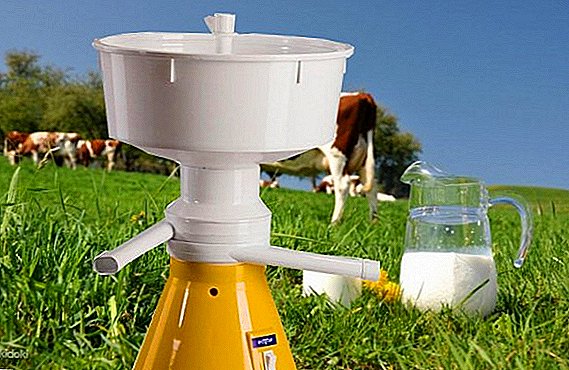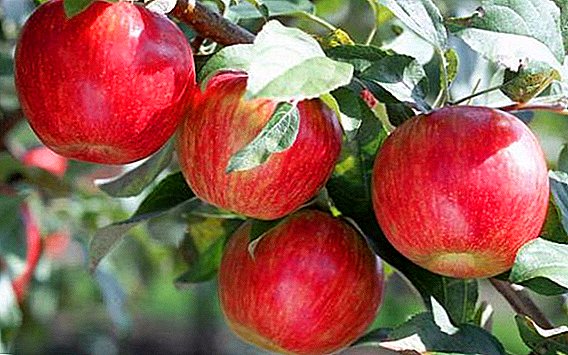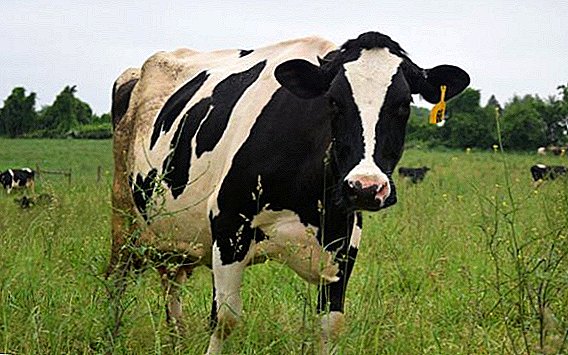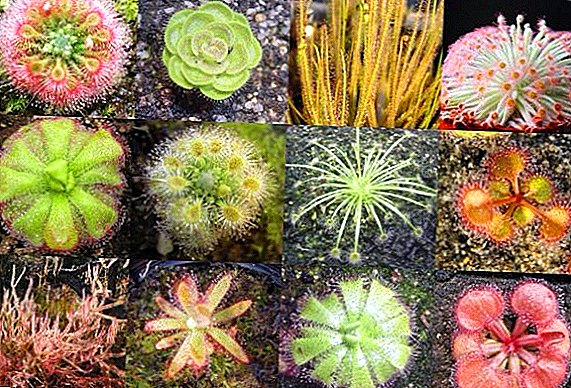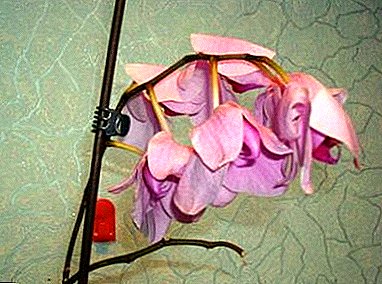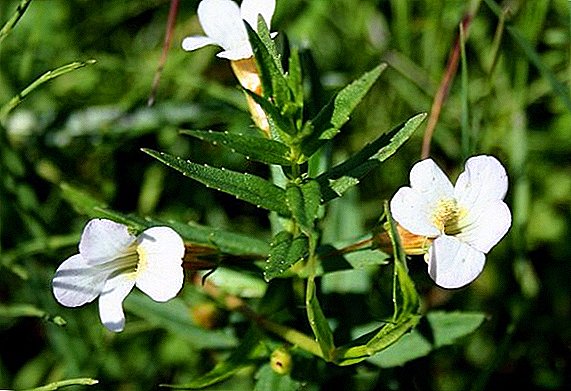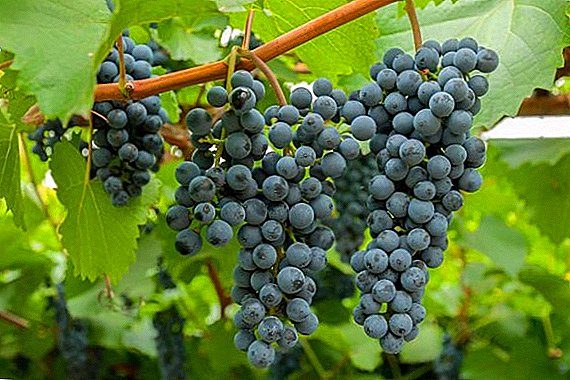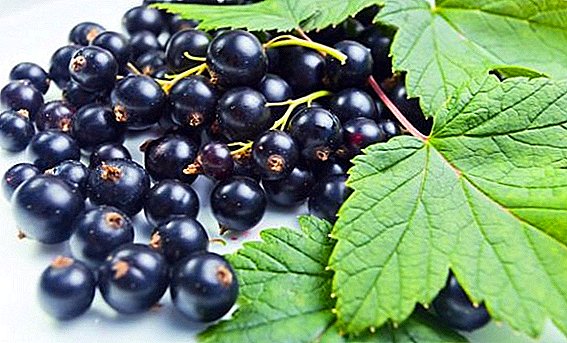 Currant is an unusually useful and fragrant berry culture. Even in small suburban areas you can always find 1-2 bushes of this plant. Clusters of yellow, black, pink and white berries will perfectly decorate a personal plot, as well as allow you to collect a high vitamin yield. Due to the incredible popularity of this garden culture, many gardeners are engaged in its cultivation. Further in the article we will tell you how to plant black currants in the fall so that even beginning gardeners could cope with such a task.
Currant is an unusually useful and fragrant berry culture. Even in small suburban areas you can always find 1-2 bushes of this plant. Clusters of yellow, black, pink and white berries will perfectly decorate a personal plot, as well as allow you to collect a high vitamin yield. Due to the incredible popularity of this garden culture, many gardeners are engaged in its cultivation. Further in the article we will tell you how to plant black currants in the fall so that even beginning gardeners could cope with such a task.
Dates of autumn planting
The planting of currant bushes can be carried out both in spring and autumn. In the current article we will talk about the autumn planting, since it is considered more favorable by experienced gardeners. According to reviews of experienced gardeners, planting should be carried out a few weeks before the expected frost, that is, around the beginning or middle of October, not later.
Did you know? Currant culture is an excellent source of vitamin B5 (pantothenic acid), which increases the efficiency of the immune system, helps to make the skin and hair more healthy and beautiful. Considering that the daily rate of an adult person is 10 mg of vitamin B5, and in 100 g of black currant there is 0.4 mg of such an element, it should be noted the useful qualities of these berries.If you plant the bushes during this period, then by the beginning of spring the ground around the currant will have time to be well compacted, and the bushes themselves will take root. Culture with the advent of heat can immediately begin to grow rapidly and develop.

Choosing a place
After learning when to plant currants in the fall, and determining in which particular month it is recommended to do it, it is also important to learn how to choose the right place for planting.
Lighting
It should be remembered that both black and other varieties of currants love sunny areas. Therefore, you need to choose a place that will be well lit most of the day. It is best to allocate a separate place for shrubs.
It is not recommended to plant them around the garden perimeter. It is also important to ensure that there are no drafts at the site. 
Soil type
Black variety currants need well-moistened soil. It is important not to forget about this feature when choosing a seat. The best option would be a place on a weak decrease.
The north-west or west sides of the backyard plot will do. Planting this berry crop is also possible on the north side of the house.
Important! Black currant will not grow on a high carbonate soil.Naturally, everything should be in moderation, so too wetland, where groundwater is too close to the surface, in no case suitable for planting this berry crop.
 Will require a soil of high fertility. For black currant varieties, the best option would be medium loamy or heavy loamy, for red currant - loamy.
Will require a soil of high fertility. For black currant varieties, the best option would be medium loamy or heavy loamy, for red currant - loamy.Check out such representatives of currants as "Vigorous", black, red, white, golden.
Cuttings or ready saplings?
As practice shows, it is berry cultures that are easiest to reproduce among fruit crops. As for the currant, it can be propagated by layering, lignified or green cuttings, seeds.
If this culture is planned to settle for the first time on the site, then in this case you can purchase a ready sapling from a breeder. You should make purchases only from trusted vendors, as well as from those gardeners who grow currants for sale for a long time.  It values its reputation, which reduces the risk of acquiring poor-quality planting material to a minimum.
It values its reputation, which reduces the risk of acquiring poor-quality planting material to a minimum.
Each of the methods has both advantages and disadvantages. In particular, propagating currants with the help of seeds, it will most likely be impossible for the young to inherit all the qualitative characteristics of the mother plant.
Therefore, most gardeners either use cuttings, or buy ready-made seedlings. It is about these most popular options that we will be discussing further.
We multiply currants by cuttings
A fairly widespread method of reproduction of currant bushes when using green cuttings. To green them need greenhouses, greenhouses or film shelters. We will understand how to plant currants in the fall cuttings. 
Stocking
To implement this method, you must use one-year green growth of currant bushes. We are talking about those shoots that grew in the current year. The cutting is considered ready at the moment when it still retains flexibility, but if it is bent sharply and with effort, it may break.
You will be interested to know about the harvesting of currants for the winter and the recipe for making wine from the currants.Such shoots in hot weather should be harvested early in the morning. If the weather is overcast, you can do it during the day. In the process of harvesting, it is important to take into account the fact that those branches that were taken from the upper shoots will be more amenable to rooting.
To store such cuts it is necessary in the conditions of the damp environment. To do this, wrap them in a pre-moistened burlap and then place them in a bag of polyethylene. The length of the cutting should be about 8-12 cm.  3-4 leaves should be left on each of them. At the same time, in several lower sheets the plate should be shortened or cut off completely, leaving only the petioles. The lower cut is done on a green cutting half a centimeter below the bud, the top cut just above the upper bud.
3-4 leaves should be left on each of them. At the same time, in several lower sheets the plate should be shortened or cut off completely, leaving only the petioles. The lower cut is done on a green cutting half a centimeter below the bud, the top cut just above the upper bud.
All cuts must be done with a pruner straight without tilting. It is permissible to use also a knife for this purpose, but it should be as sharp as possible so as not to damage the shrub.
Rooting
In order for the cuttings to better root, you need to tie them into small bunches and place the lower ends into a solution of a growth-promoting substance. To do this, you can use heteroauxin (10 mg), diluted in 1 liter of water.  The cuttings themselves should be lowered into the liquid to a depth of no more than 2 cm. After 12–20 hours, the bundles should be removed from the solution and covered with a moistened cloth. The landing process should take place on the same day.
The cuttings themselves should be lowered into the liquid to a depth of no more than 2 cm. After 12–20 hours, the bundles should be removed from the solution and covered with a moistened cloth. The landing process should take place on the same day.
Landing
Greenhouses and greenhouses for planting cuttings in them must be prepared in advance. The soil should be carefully dig and level. Pure river sand should be poured on top of it, or a mixture of sand and peat, the thickness of this layer should be about 4 cm.
It will be useful for you to learn about the correct care of a currant in the spring and in the autumn.It is recommended to plant the cuttings in rows, keeping the distance between the lines of about 7-8 cm. The interval between plants in one lane should be about 5 cm. Cuttings into the soil are set straight, observing a depth of 2-2.5 cm
At the end of the landing, the bed should be watered abundantly using a sprayer. Shelters should be tightly closed and priten branches or gauze. How quickly the cuttings take root depends on the proper care of them. It is very important to maintain a high level of humidity and optimum temperature conditions. The first 2-3 weeks cuttings should be sprayed at least 2 times a day in cloudy weather, from 4-5 times a day in hot.
The temperature at night should not fall below 16 ° С, in the daytime - not to exceed 25 ° С.
Important! [a]If the temperature indicator in the greenhouse has exceeded 28-29°C, the room must be ventilated until the temperature stabilizes.
After 2-3 weeks, when the cuttings have already started to take roots, it is recommended to reduce watering, and to feed the plants themselves with nitrogen-containing mineral fertilizers. It is also important to harden sprouts. To do this, it is necessary to air the greenhouse from time to time, and later the shelter can be removed altogether.  Cuttings that are rooted can be planted in a permanent place for the next year. It is necessary to take care of them in every way, weed and loosen the soil, fight against diseases and harmful microorganisms.
Cuttings that are rooted can be planted in a permanent place for the next year. It is necessary to take care of them in every way, weed and loosen the soil, fight against diseases and harmful microorganisms.
Planting currants ready seedlings
It is best to plant currants with saplings in the fall. Spring disembarking is usually less successful because the bushes start growing early, which complicates the rooting process. Seedlings should be bought only from proven distributors.
Planting material should have a good branching of the root system, the stem should be healthy and fresh, signs of disease should be absent. In no case can not buy faded or too dry seedlings. They will not be able to take root and time will be wasted. You also need to carefully monitor the absence of insect larvae and pests on the roots of shrubs.
To plant currants need to dig a hole 40x40 cm. The depth of the hole depends on the volume of the root system. The roots should fit completely into the pit, without bending and bending over.
Learn how to deal with such diseases and pests of currants as aphid, rust, powdery mildew, scab.On less rich soils, the well is recommended to do more. In the pit itself you need to form a nutrient layer. Place a mixture of soil and compost on the bottom. You can also use peat or rotted manure.
Additionally, it is recommended to add wood ash and some mineral fertilizers to the hole. Then the pit should be filled with more fertile soil (darker) without any fertilizers, place the seedling and at the end fill the hole to the top with earthen mixture.  The seedling should be placed in the hole to a depth that is about 5 cm larger than the one in which the plant has previously grown. After planting it is very important to water the bush plentifully, even if it is rainy outside.
The seedling should be placed in the hole to a depth that is about 5 cm larger than the one in which the plant has previously grown. After planting it is very important to water the bush plentifully, even if it is rainy outside.
Bottom circle is recommended to mulch sawdust, peat or compost. A layer of mulch will need about 5-8 cm. You can not fall asleep the seedling itself.
Immediately after the currant planting is completed, the bush should be cut, leaving the plant 7 cm high. No need to regret the currant and neglect such a method. It should be understood that the plant, which was shortened in this way, will form a fluffy and beautiful bush the very next year.
And the plant, which will remain intact, throughout the year will look like a miserable whip. So post-plant pruning is an extremely necessary manipulation.  It is necessary to place currants on a separate site, but not on borders of a personal plot. Usually it is planted in rows, keeping a distance of 2-2.5 m between them. The distance is needed so that the shrub can comfortably grow, and also that the plants do not shade each other from the sun's rays.
It is necessary to place currants on a separate site, but not on borders of a personal plot. Usually it is planted in rows, keeping a distance of 2-2.5 m between them. The distance is needed so that the shrub can comfortably grow, and also that the plants do not shade each other from the sun's rays.
Did you know? [a]The calorie content of the black currant is very low - only 60 kcal per 100 g of berries. As for the red currant, its caloric content is even lower - 50 kcal per 100 g. Therefore, those who watch their figure or tend to lose weight should definitely pay attention to this tasty and healthy berry.
Transplant features
There are cases when it becomes necessary to transplant currant bushes. This happens when a bush requires rejuvenation, when other shrubs or trees interfere with its development. Also, transplantation is needed in cases where the soil under the currant is depleted.  First of all, you need to choose a place for the future berry. It should be well lit. Also, before transplanting this berry crop, it is necessary to prepare the soil. The essence of the preparation is the same as it was described earlier. It is necessary to dig a plot, fertilize it with useful mineral dressings. You can apply humus, superphosphate, ash, etc.
First of all, you need to choose a place for the future berry. It should be well lit. Also, before transplanting this berry crop, it is necessary to prepare the soil. The essence of the preparation is the same as it was described earlier. It is necessary to dig a plot, fertilize it with useful mineral dressings. You can apply humus, superphosphate, ash, etc.
Next on the site should prepare the wells, it is desirable to do it for 2-3 weeks before the intended transplant. The distance between the holes is recommended to keep from one and a half to two meters, so that the plants do not overshadow each other. For planting red currants, it is desirable to lay out a bit of rubble as a drainage at the bottom of the pit.
Wells need to do a depth of 40 cm or more, so that the root system can get the right amount of side roots. The width of the holes should be at least 50-60 cm. It is necessary to focus on the size of the currant.  Shrub that will be transplanted, you need to carefully dig and get out of the ground. In this case, you can not pull the shoots, so as not to damage the branches. A healthy shrub can be transplanted along with an earthball.
Shrub that will be transplanted, you need to carefully dig and get out of the ground. In this case, you can not pull the shoots, so as not to damage the branches. A healthy shrub can be transplanted along with an earthball.
If the plant is sick, then you need to carefully inspect the root system, remove all dried and damaged roots, remove insects and pest larvae. Plant roots can be treated with a solution of potassium permanganate.
After all the above manipulations, it is necessary to pour a sufficient amount of water into the pit so that the earth turns into a liquid substance. In this mixture, you need to lower the bush, holding it on weight, sprinkle with dry soil 6-8 cm above the root neck of the plant. Then the currant bush is watered again, so that the root soil is compacted.
Planting currants at first glance may not seem like the easiest process, but it is worth noting that after doing all the manipulations once, in the future everything will be much easier. This remarkable berry crop, with proper care, will very quickly become comfortable on the site, will delight the gardener with a rich and rewarding crop.


